 |
| Mount Fuji and Lake Syojin(精進湖, Syojinko) in winter photo by 高画質壁紙写真集無料壁紙 |
The Mt. Fuji climbing season starts on July 1 and ends on August 26, when the Yoshida Fire Festival(吉田の火祭り, Yoshida no Himatsuri) is held. Originally, it started on the 1st day of the 6th month in the lunar calendar.
glow of sunrise
 |
| _IGP5517s by INABA Tomoaki /flickr |
Mt. Fuji(富士山, Fujisan) situated between Yamanashi and Shizuoka prefectures, the highest peak in Japan, is 3,776 meters in height. On its summit, the air pressure is only 60 percent of that at sea level and the average The temperature is six degrees Celsius even in the hottest part of summer. Mount Fuji climbers are exposed to heavy winds when climbing. They are careful not to get altitude sickness (and heatstroke) and have to look out for falling rocks, and dropping rocks for other climbers. Even during summer, several climbers die on the mountain every year.
 |
| Fuji Sunset by inoc /flickr |
Mt. Fuji's last eruption took place in 1707, but the mountain is classified as an active volcano. The volcano has been being monitored for signs of its eruption. If Fuji erupts, its ashes will also fall on Tokyo. The ashes paralyze the transportation network, shut off the water supply, cause blackouts, and have an effect on health.
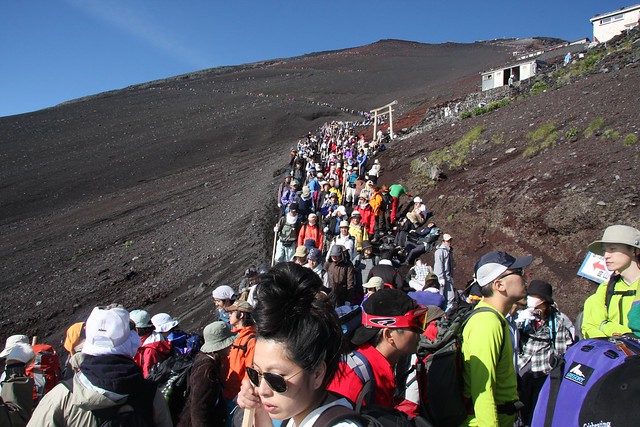 |
| People! by Joshua Rappeneker /flickr |
The climbing trails near the mountain's summit are jammed with many climbers during summer, especially before the dawn. Because Japanese climbers want to watch a sunrise on the mountain's summit. It is said that it comes from the sun and mountain worship.
Now its climbing is a leisure activity for most people, but Fuji has also been a spiritual spot for Japanese.
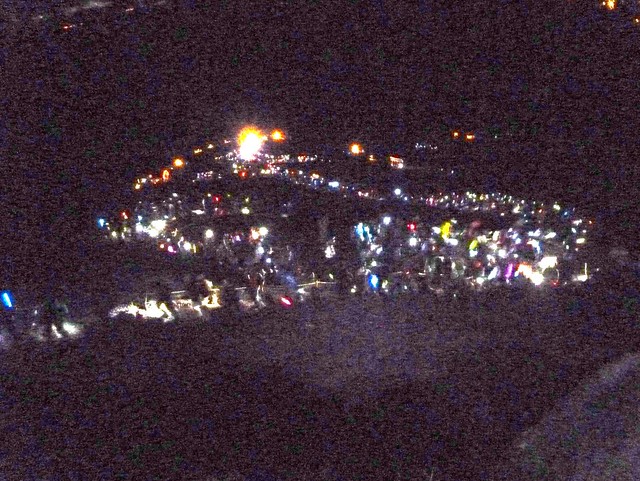 |
| 富士山登山(援人やま部) Mt.Fuji Trekking 2012 by jetalone /flickr |
a row of climbers before the dawn
right before the sunrise
 |
| 富士山登山(援人やま部) Mt.Fuji Trekking 2012 by jetalone /flickr |
sunrise on the summit
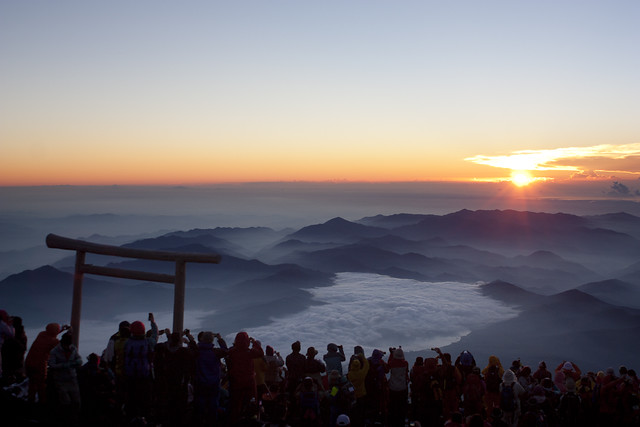 |
| Mt.Fuji-07 by s.nkzw /flickr |
sunrise on the summit
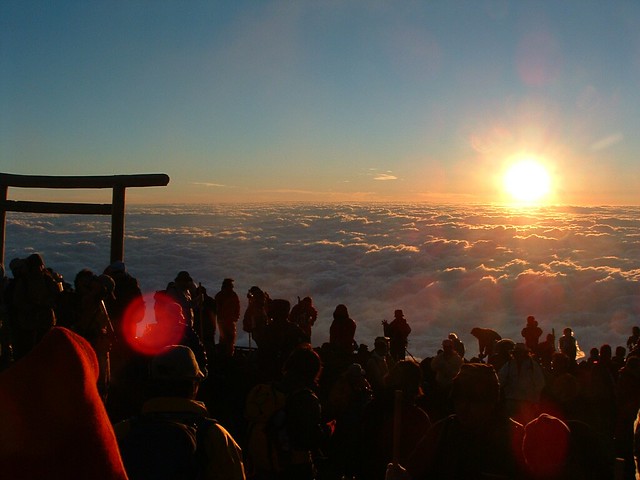 |
| Fire ball above Fuji-san by atomicforcemicroscope /flickr |
 |
| 富士山頂でご来光(富士山登山2009) Climbing Mt.Fuji by jetalone /flickr |
Many climbers watch a sunrise on the summit.
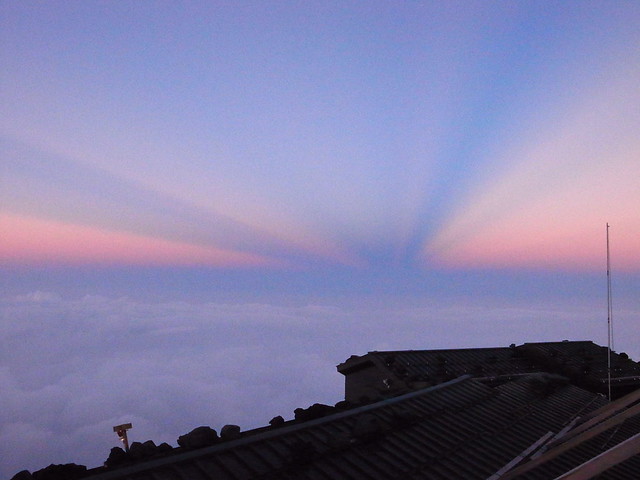 |
| 富士山ホテルの日没, 富士山登山(吉田ルート) Climb Mt.Fuji(Yoshida Trail) by jetalone /flickr (sunset at the Honhachigoume Fujisan Hotel on the eighth station of Mt. Fuji) |
Mount Fuji was registered as the UNESCO World Cultural Heritage Site "Fujisan, Sacred Place and Source of Artistic Inspiration" on June 26.
The achievement of a good balance between environmental preservation and tourism is the most difficult and important task. Mt. Fuji was not registered as a“natural site”because of garbage that climbers leave.
The site includes the mountain itself and the follwing places.
four climbing trails:
Omiya・Murayama route(current Fujinomiya route) above the sixth station
Suyama route(current Gotenba route) located at an altitude of more than 2050 meters and around Suyama Otainai(須山御胎内)
Subashiri route above the fifth station
Yoshida route
Fuji Five Lakes:
Lake Yamanakako(山中湖)
Lake Kawaguchiko(河口湖)
Lake Saiko(西湖)
Lake Syojinko(精進湖)
Lake Motosuko(本栖湖)
Shinto shrines dedicated to Mount Fuji:
Fujisan Hongu Sengen Taisha Shrine(富士山本宮浅間大社)
Kitaguchi Hongu Fuji Sengen Shrine(北口本宮冨士浅間神社)
Yamamiya Sengen-jinja Shrine(山宮浅間神社)
Murayama Sengen-jinja Shrine(村山浅間神社)
Suyama Sengen-jinja Shrine(須山浅間神社)
Fuji Sengen-jinja Shrine (Subashiri Sengen-jinja Shrine) (冨士浅間神社(須走浅間神社))
Kawaguchi Asama-jinja Shrine(河口浅間神社)
Fuji Omuro Segen-jinja Shrine(冨士御室浅間神社)
Oshi houses:
“Oshi” Lodging House (Former House of the Togawa Family, 旧外川家住宅)
“Oshi” Lodging House (House of the Osano Family, 小佐野家住宅)
eight springs in Oshino(忍野八海, Oshino Hakkai):
Deguchiike Pond(出口池)
Okamaike Pond(お釜池)
Sokonashiike Pond(底抜池)
Choshiike Pond(銚子池)
Wakuike Pond(湧池)
Nigoriike Pond(濁池)
Kagamikke Pond(鏡池)
Shobuike Pond(菖蒲池)
lava tree molds:
Funatsu lava tree molds(船津胎内樹型, Funatsu Tainai Jukei)
Yoshida lava tree molds(吉田胎内樹型, Yoshida Tainai Jukei)
historical site with lava tube:
Hitoana Fuji-ko Iseki(人穴富士講遺跡)
others:
Shiraito no Taki waterfalls(白糸ノ滝)
Mihonomatsubara pine tree grove(三保松原)
No comments:
Post a Comment